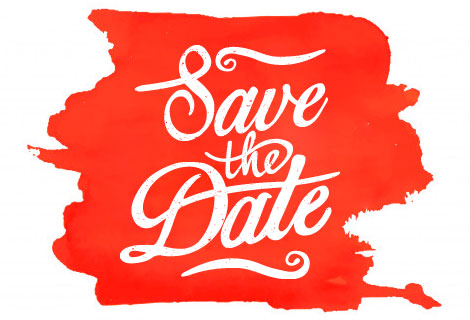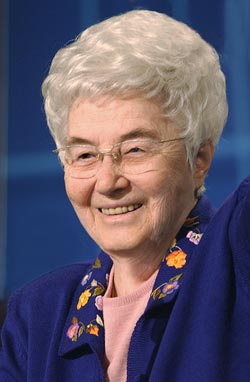The Market and the temple/1 - As in other epochal phases in the past, the pandemic makes it clear that the economy should not be demonized, but converted
By Luigino Bruni
Published in Avvenire 08/11/2020
The great lesson found in the foundation of the Monti di Pietà by the Franciscans tells us that we will not get out of this crisis in any way improved if we do not give life to new institutions first, including financial ones.
Great crises are always processes of "creative destruction". They make things that until yesterday seemed unshakable fall apart, and the resulting ashes give way to new things that were previously unthinkable. Throughout history, the great institutional changes have almost always been generated by collective moments of pain, by enormous social wounds that have sometimes even been able to give birth to a blessing. The religious wars between Catholics and Protestants gave rise to the stock exchange and central banks in many European countries in the seventeenth century. The Christian faith itself was no longer sufficient to guarantee commercial and financial exchange in Europe. Hence, it was necessary to create a new form of faith and a new source of trust (fides), something that was offered by new the economic and financial institutions from which capitalism flourished. In the second half of the nineteenth century, the industrial revolution created a serious credit crisis: Catholics and socialists responded by giving birth to rural banks, cooperative banks and savings banks. In the twentieth century, the world wars left us a legacy of new political and institutional innovations (from the European Community to the UN), but also new financial institutions (Bretton Woods). As if men were only able to look and aim higher together into that night, until finally seeing the stars, in moments of immense pain.
After the collapse of the Roman Empire, the monasteries also became an economic happening. While a world and an economy ended, a new world and a new oikonomia were being rebuilt within the walls of the abbeys: ora et labora. The builders of that new Europe understood that she would not be resurrected without resurrecting the labour market and the economy as well. And so, while they were saving the manuscripts and writings of Cicero and Isaiah, they also saved ancient minting of coins, accounting techniques, commercial codes, mercantile statutes, and above all, they made the monasteries a European network of hubs where fairs, businesses and exchange developed, because fides-trust was being safeguarded and nurtured there. The monks understood from reading the Gospel that the economy had a role that was much too important in life, and if it is not put at the service of life, it becomes the master of it. Hence, they took care of it.
Then, in the fifteenth century, the Franciscan movement generated the Monti di Pietà, in what was one of the most interesting and extraordinary, although largely underestimated and misunderstood, episodes of European economic history. The Monti di Pietà were decisive institutions for the Italian cities, for the poor, for families and for the economy as a whole. They were born from the tireless preaching of the observant Friars Minor, who from the mid-fifteenth century founded hundreds of them, especially in central and northern Italy. The cities began developing and became increasingly richer, but, as often happens, the enrichment of some (the bourgeoisie) did not bring with it the reduction of poverty but rather its increase. The Franciscans understood that there was a new form of "poverty Madonna" to be loved, and without any delay they gave birth to new banks, a new financial system that would also reach the excluded. And they did something amazing, which only an immense charisma like that of Francis could have generated. The banks, much more so yesterday than today, were icons of the "devil's dung", they were the "temples of mammon", the image of the she-wolf of greed. Francis began his story by saying "no" to that world of money, the most radical no that could have been imagined and that had in fact ever been imagined in Europe.
The banks of the time lent to the rich, and the poor often ended up in the hands of usurers. The fight against usury was the reason for the birth of the Monti di Pietà. Bernardino da Feltre, Giacomo della Marca, Giovanni da Capestrano, Domenico da Leonessa, Marco da Montegallo and many other friars made the foundation of the Monti their main work and effort - Savonarola also contributed to the foundation of the Monte di Firenze. Until 1515, there were sixty-six Friars Minor promoting the activity of the Monti di Pietà. Some of them have been proclaimed saints or blessed. It is wonderful that the Monte di Pietà was right in the centre of the effigy of these saints, (I personally recovered those of Bernardino da Feltre and Marco da Montegallo). The symbol of that Christian perfection was in fact a bank, which effectively turned from an icon of mortal sin into a symbol of Christian holiness. Like the Eucharist, like the sacraments and like the Gospel. An entirely biblical and evangelical secularity, which we have largely lost with the arrival of modern times, and which still leaves all those who (like me) believe that there are few things more "spiritual" than the double-entry method and a construction site, breathless.
Bernardino called the Monte di Pietà, the Monte of God (Monte di Dio): «Whoever helps one does well, he who helps two does better, and he who helps many does even more so. The Monte helps many. If you give money to a poor man so that he can buy bread or a pair of shoes, when he has spent the money, it is all over. However, if you deliver that money to the Monte you will help more people... Building churches, buying missals, chalices, vestments for mass, is a holy thing, but offering money to the Monte is holier still. Do not spend money on stone and lime, on churches, because everything will go up in smoke, spend it on what will not be lost, that is, giving to Christ in the poor» (The Sermons of Bernardino da Feltre, vol. II). The birth of the Monti was one of the most fascinating and generative paradoxes in European history. The dispossession of Francis, his total renunciation of his father Bernardone's economy and wealth, the act of "possessing nothing" and the "sine proprio" lead to the creation of banks two centuries later. And they were real banks, not charitable institutions, so much so that the foundation of the first bank of Ascoli Piceno in 1458, following the preaching of Marco da Montegallo, is not actually considered by some to be a real Monte due to the lack of payment of an interest on loans.
The issue of the interest on loans is in fact central. Bernardino da Feltre was the great advocate of the need for loans not to be entirely free; or rather, of the thesis that in order for the gratuity that animated the birth of the Monte to last and be sustainable it was necessary to pay an interest, albeit at the lowest rate possible. It was not an easy battle, because his opponents were theologians and jurists (many Dominicans) who accused the Monti of usury, precisely because of the payment of an interest greater than zero. Thus, Bernardino replied in the same Sermons: «Considering the greed of men and the lack of charity, it is better that those who resort to the Monte pay something and are served well, rather than not pay anything and be served badly. Do you want to be served badly? Then do not pay. Who could have greater experience regarding this than us friars? One comes to the convent, introduces oneself to the porter and says: I am willing to work your garden for free. He goes and does that, and shortly after, he asks for breakfast. That is fair and just» So, in the name of gratuitousness, many theologians actually prevented the birth of the Monti or publicly contested them, as in the case of the foundation of the Monte di Mantua in 1496.
This is one of the most important and convincing demonstrations of the difference between gratuitousness and that which is free: a contract, with the necessary payment, can contain more charis (gratuity) than an act of pure liberality. Gratuity in this case does not coincide with what is being given. The gratuitousness of the Monti was expressed in many other things: long-term lending (and not requesting the loan back within a month or a week, as the usurers did), asking for a rate that covered only the expenses, lending money only for real needs. If the borrower was unable to retrieve his pledge, he received more than what the Monte obtained from the sale. If possible, they lent money to everyone. They were non-profit institutions, or sine merito. Bernardino made a distinction between the interest that arose from a loan (wrongful) and the interest for a loan (to enable the existence of the Monte). In the name of pure gratuity, some Monti either did not begin their activity at all or soon ended up bankrupt, or became the property of some rich merchants who, by using the capital coming from community goods to cover the management costs, effectively transformed them into private goods and entities.
Finally, one rhetorical technique used by those Friars Minor, used above all by Marco da Montegallo, was particularly impressive. In order to show the seriousness of lending money to usurers, they compared the good that was done by lending to the Monte with the disproportionate wealth that the usurers obtained by investing that same sum. He wrote in his "Tabula della salute": «It needs to be known that with one hundred ducats given at thirty percent a year, after fifty years those hundred ducats that were the initial capital, including interest and accumulated capital, will have added up to: 49.750.556,7 ducats». An enormous sum, the result of compound interest (interest on interest), which must have greatly affected the imagination of his listeners - and ours. And in fact convinced them. Those Franciscans thus responded to the serious crisis of their time, giving birth to new banking institutions. They did this, because they knew the real needs of the people, and thus understood that in a great crisis it is also necessary to reform the economy and financial system, not just fear them, by creating new banks and not just criticizing the old ones.
Today we are in the midst of a world crisis not much different in size from the great crises of past centuries. New institutions will be needed, including financial and insurance ones, capable of managing the duration and the aftermath of Covid, which will leave the world even more unequal, with even poorer poor people. While we think about these innovations, the ancient creation of the Monti has some important lessons to teach us. The first one concerns the very nature of the economy and financial system. Banks and money are human creations; they are life and should not be demonized, because if we demonize them they will truly become demons. They should be treated as we treat life. Faced with a financial system that only serves to increase poverty, we can and must respond by creating a different financial system that reduces it.
Finally, this splendid Franciscan story suggests that even today it is probable that the new Monti di Pietà, which will more than certainly be very different from those of the fifteenth century, will not arise from wealthy merchants and profit oriented bankers, (who were always the first enemies of the foundation of the Monti). They will arise from those who know the poor, those who esteem them and love them, because they have received a charisma. Not necessarily from the poor, but certainly from friends of the poor. The friars were not the owners of the Monti; they were merely the promoters, the activators of the creation processes of those banks. Today we need new "Franciscans", connoisseurs and carers of the poor who, instead of cursing the economy and financial system, simply work to create a different one. A new secular holiness, new "effigies" with businesses and banks at the centre.








